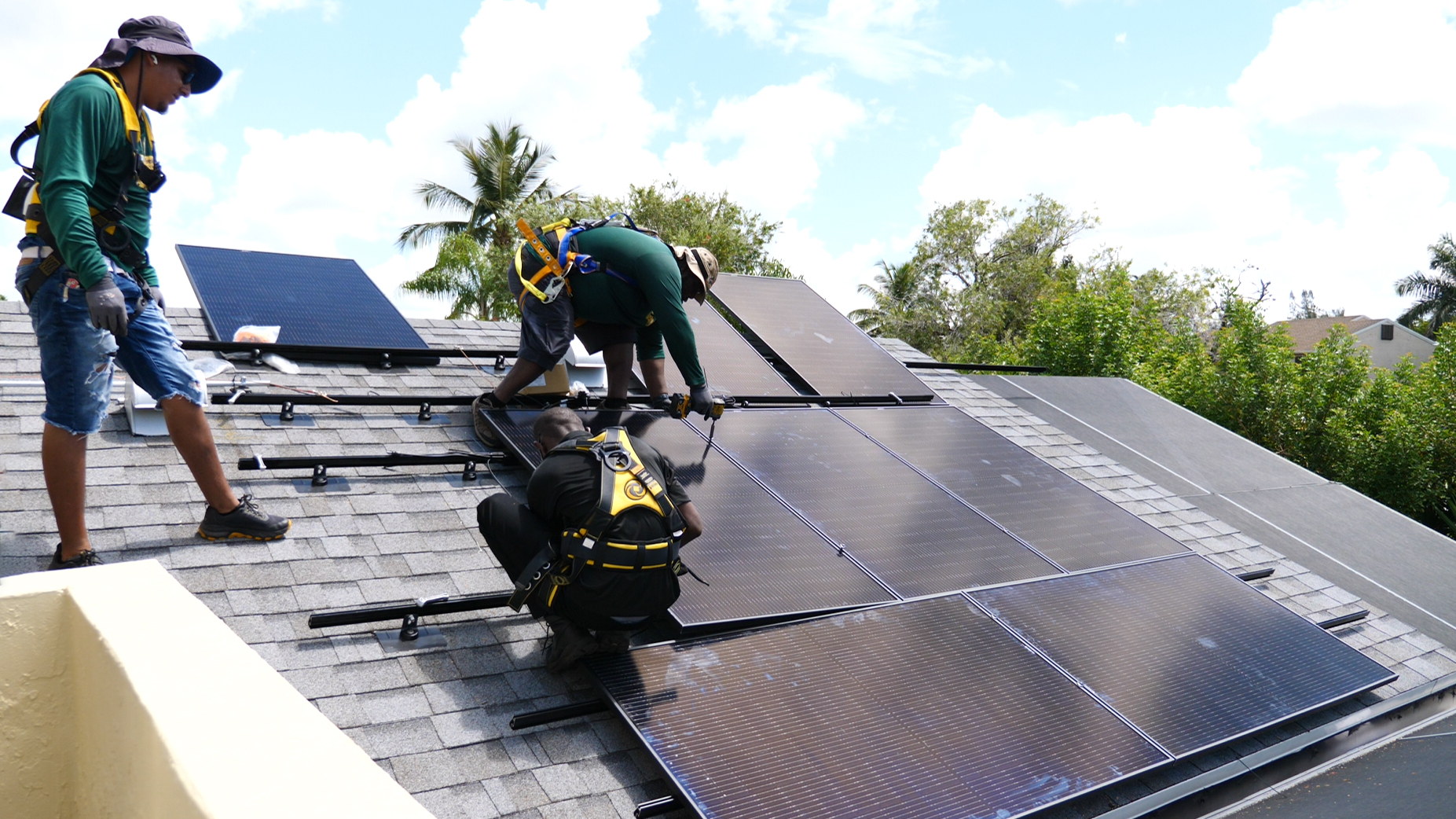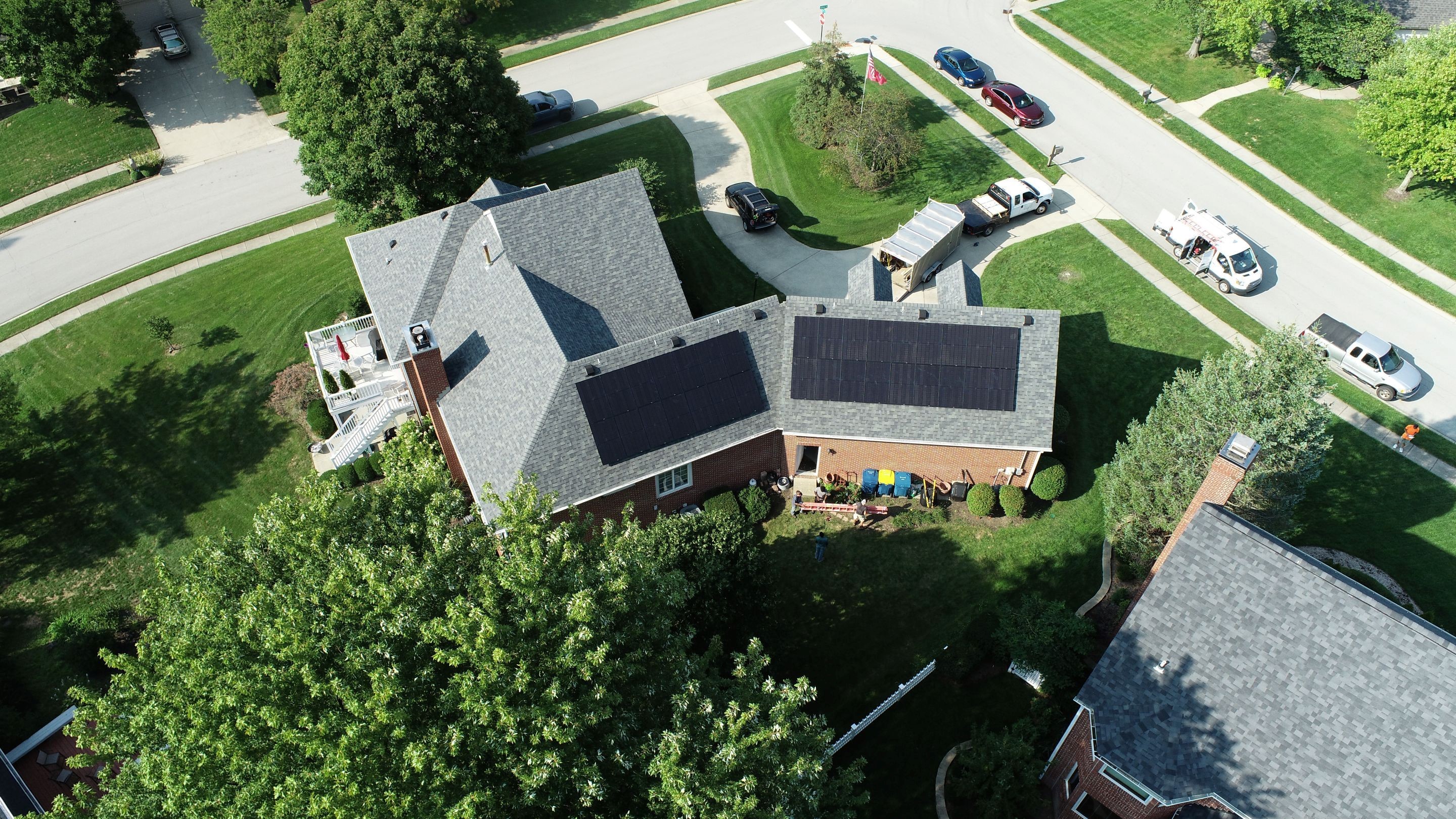Installing a home solar system offers numerous benefits, from saving on electricity bills to protecting against power outages, increasing your home’s value, and lowering your carbon footprint. If you’re ready to make your home cleaner and greener with state-of-the-art technology, solar energy is one investment that will pay for itself in a relatively short time with minimal time and effort from you.
Solar panels generate electricity for your home, reducing or even eliminating the electricity you would buy from your utility company. And, if you finance your system with a fixed-rate loan, you can lock-in a lower monthly payment than your usual electric bill, shielding you from fluctuating energy prices that the utility company passes on to its customers.
But how much does it cost to go solar, and how long does it take to realize the financial benefits?
Average cost and tax incentives
The amount you pay to install rooftop solar panels depends on several factors, including the number of panels your home needs, your equipment’s efficiency, the characteristics of your roof, and the incentives available where you live. In addition to the Federal investment tax credit (ITC) that allows qualifying homeowners to claim 30% of the total costs of their solar panel from their federal tax bill, many states offer further solar incentives for homeowners.
Photo courtesy Panasonic Eco Systems
The average U.S. home usually needs between 17 and 25 solar panels to fully meet its electricity requirements, making a typical price after the ITC tax credit anywhere from $18,000 to $26,000. This includes materials, labor, and the local cost per watt. Electricity costs differ from state to state, and a reputable solar installer will examine your electricity bills, roof characteristics, and local incentives to design a system that meets your household's energy requirements. Be sure to get multiple estimates and choose the best system for your budget.
Solar affords short-term and long-term savings
After connecting and turning on your solar solution, the panels begin producing free energy immediately, significantly reducing or possibly even eliminating your electric bill (aside from facility fees and taxes). You will also limit your exposure to utility price inflation, which averages 2.5% every year.
Over a typical 25-year panel warranty period, you could save between $20,000 and $96,000 on electricity. The average homeowner saves around $42,000 with solar. Solar solutions can last longer than 25 years, so your savings could be even higher.
Other factors that influence how much you could save by going solar include:
- Whether your system meets 100% of your energy needs. Your roof size and orientation impact the size of your system, so in some cases, a solar array might offset less (or more!) than 100% of the energy you use at home.
- Local incentives. Net metering (sending energy back to the grid for credit on your bill), rebates, and solar renewable energy credits (SRECS) may be available in your area and add to your overall savings. Search the DSIRE database to find out about the incentives available in your ZIP code. Be on the lookout for seasonal promotions, too.
- Panel efficiency. Solar panels and equipment come in a variety of price points based on efficiency. For example, Panasonic’s EVERVOLT® panels range from 350W to 430W. Your installer can help you find the most efficient panels for your budget and energy needs.
Photo courtesy Panasonic Eco Systems and Jefferson Electric
How quickly will a solar solution pay for itself?
A solar solution can take about eight years to pay for itself through savings, depending on whether or not it offsets 100% of your electricity needs. After that, the electricity from your panels is free.
To work out your break-even point, divide the total cost of your solar panel system (minus any upfront incentives) by the amount you typically pay for electricity per year.
For example, if your system cost $20,000 to install, and you qualify for the federal ITC of 30%, your adjusted cost is $14,000. That, divided by the amount you pay for electricity annually ($1,700 is the national average), is about eight years.
How to get more from your panels
Adding a solar battery to your panels will help your energy go further and last for longer, further reducing your energy bills and shortening the payback period. Batteries store the surplus electricity generated by your panels for you to use later, sell back to the grid through net metering, or earn SRECs, depending on your state’s incentives.
Solar-plus-storage is particularly beneficial if you're on a time-of-use rate plan, where your utility charges more for electricity during the on-peak time. With a battery, you can avoid paying higher rates when using your free, stored power. Batteries are also eligible for a 30% tax credit and other incentives, which can help lower the upfront costs
There are plenty of other ways to ensure you get the most from your panels, including cleaning them periodically to prevent a build-up of dust and dirt, trimming shade trees, removing snow, and working with an experienced installer to design the optimal system for you. When you’re ready to go solar, check out Panasonic’s wide range of solar and storage solutions.





